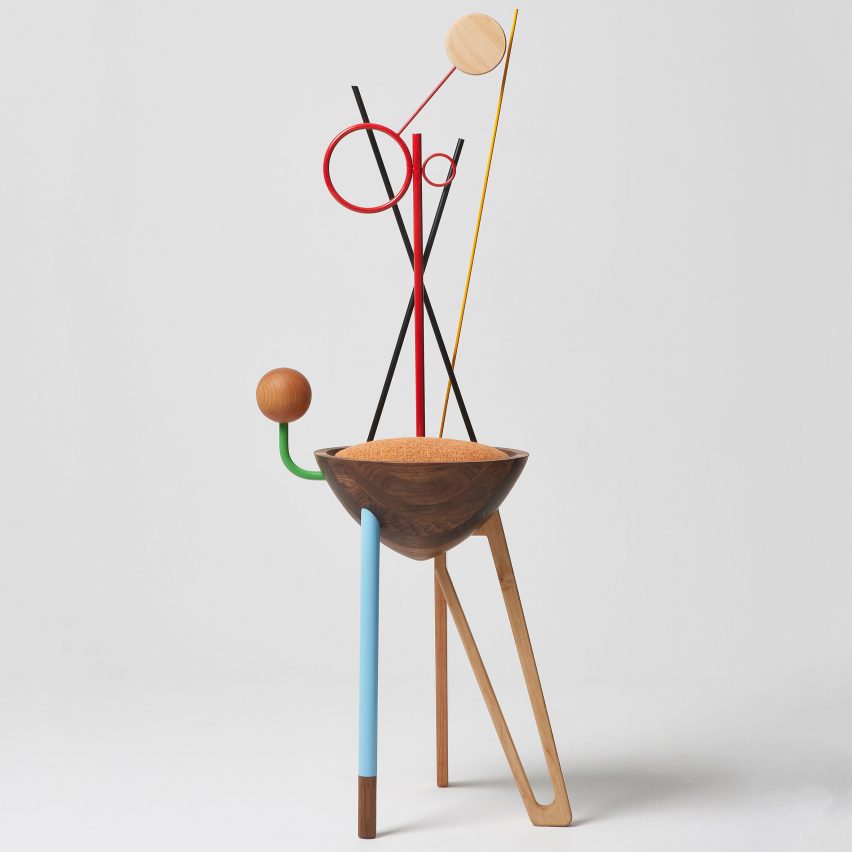
From sagging shelves made of foam to a chair modelled on Wassily Kandinsky's abstract paintings, we've rounded up 11 quirky furniture designs that prioritise form over function.
While furniture is typically made to fulfil particular tasks and actions, like holding objects or sitting, designers frequently use their work to stretch the definition of the term.
Chairs and tables often also serve as sculptures or artworks, blurring the line between function and aesthetic.
This principle has gained in popularity since Italian creative Ettore Sottsass founded the Memphis Group in 1980, which aimed to turn against conventional design.
"When I was young, all we ever heard about was functionalism, functionalism, functionalism," Sottsass once said. "It's not enough. Design should also be sensual and exciting."
Here are 11 examples of furniture designs that tread a fine line between being functional and being purely ornamental:
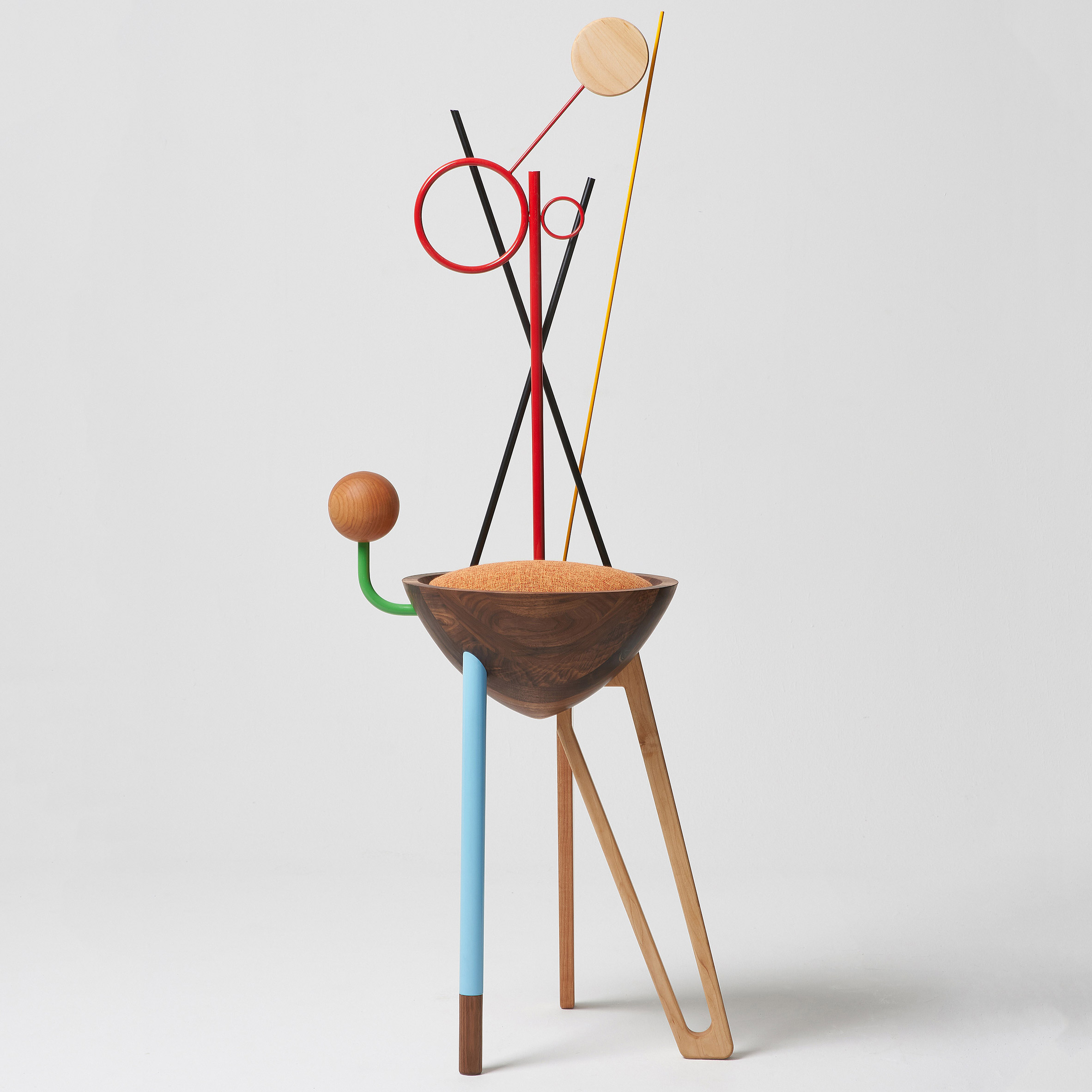
Abstraction chair by WoongKi Ryu
Korean designer WoongKi Ryu based each of the elements of this chair on the graphic shapes and bright colours seen in the abstract paintings of 20th-century artist Wassily Kandinsky.
Featuring a cone-shaped wooden seat and a backrest formed from several splaying metal rods, the Abstraction chair intentionally puts form before function.
"Instead of approaching the functional purpose of the chair, I wanted to highlight the emotion and meaning of the chair, which could only be expressed abstractly," the designer told Dezeen. "I wanted to mimic the way Kandinsky approached abstraction in his paintings."
Read more about the Abstraction chair ›
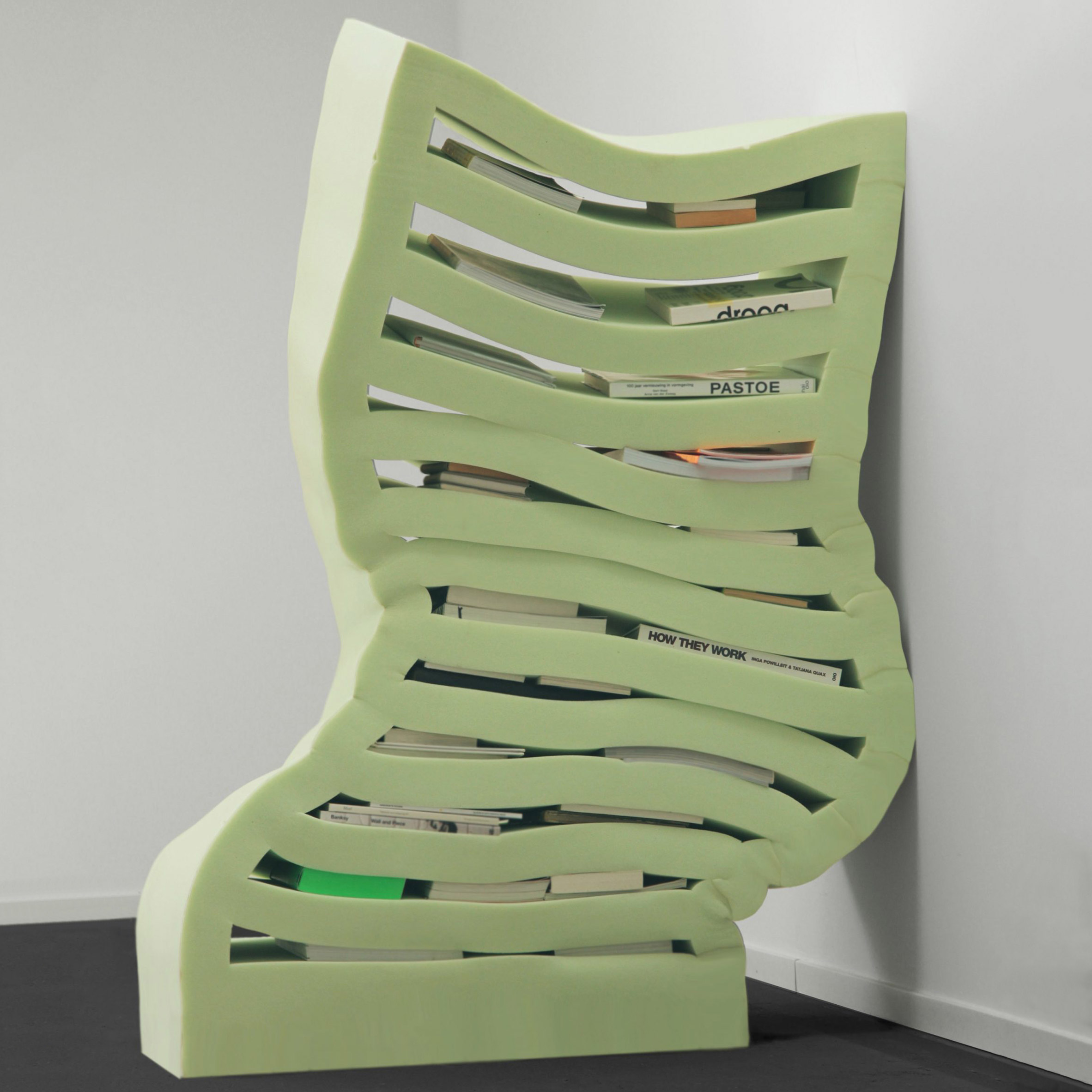
Soft Cabinets by Dewi van de Klomp
These soft, sagging shelves have been made from foam rubber – a material typically used for cushioning in car seats and wall insulation.
Due to their cushioned texture, each of the shelves take on new forms in response to their contents, morphing and bending over as items such as books, magazines or tableware are slotted inside.
For Van de Klomp, functionality was not her main goal when creating the pieces. "I like to flirt with the boundaries of design," she explained. "Functionality is not a must. It is about the story that I would like to tell."
Read more about the Soft Cabinets ›
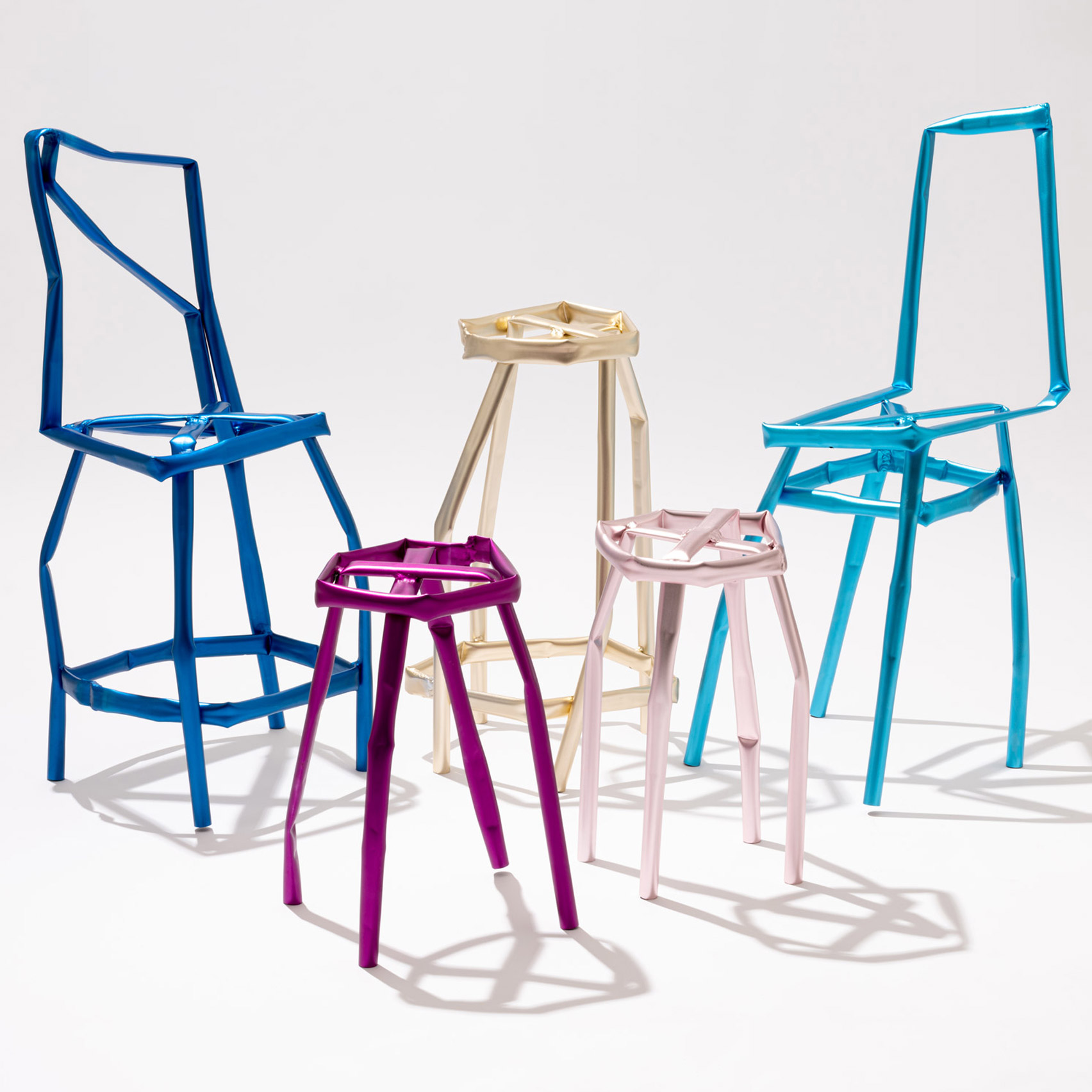
Aluminum Anodized by Yeon Jinyeong
South Korean designer Yeon Jinyeong created a series of furniture made from vibrantly coloured aluminium pipes that have been hit, folded and welded into crumpled forms.
The chairs aim to explore the "contradictory beauty" of things that have been abused. Despite looking damaged, they are able to perform their usual function, "but it's never comfortable", said Jinyeong.
Read more about the Aluminum Anodized collection ›
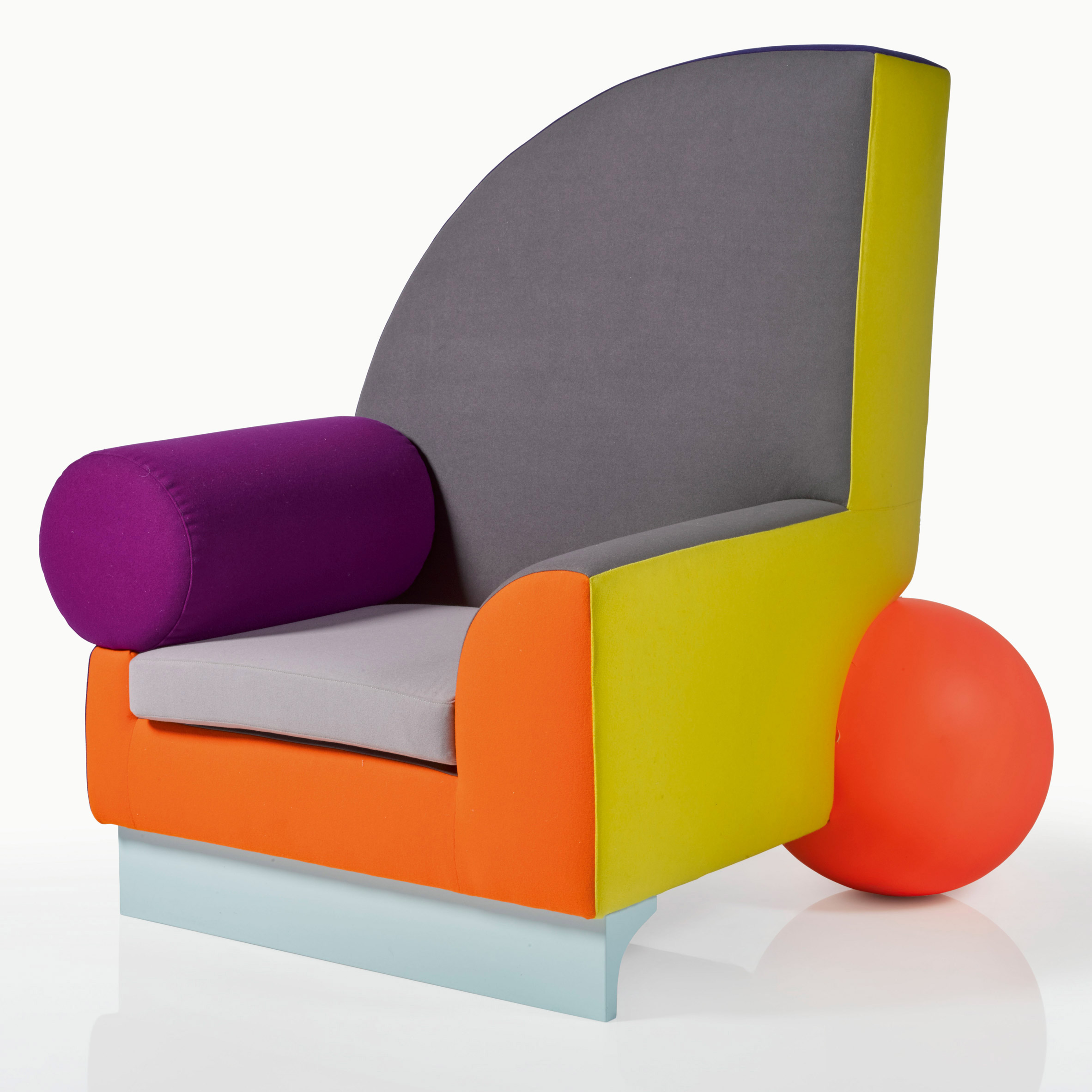
Bel Air armchair by Peter Shire
The 1982 Bel Air chair by Californian designer and ceramist Peter Shire was one of the most noted contributions to the 1980s Memphis Group – the Italian collective founded by Ettore Sottsass.
Made up of various different shapes in contrasting colours, the design was part of David Bowie's private Memphis collection. Adam Trunoske, a 20th-century design specialist at London auction house Sotheby's, describes the asymmetrical piece as "almost an anti-chair".
"There are only a few flat lines on it, making you wonder 'How am I meant to sit on that?', 'Where should I sit?'. It challenges traditional ideas of how a chair should be," said Trunoske.
Read more about the Bel Air armchair ›
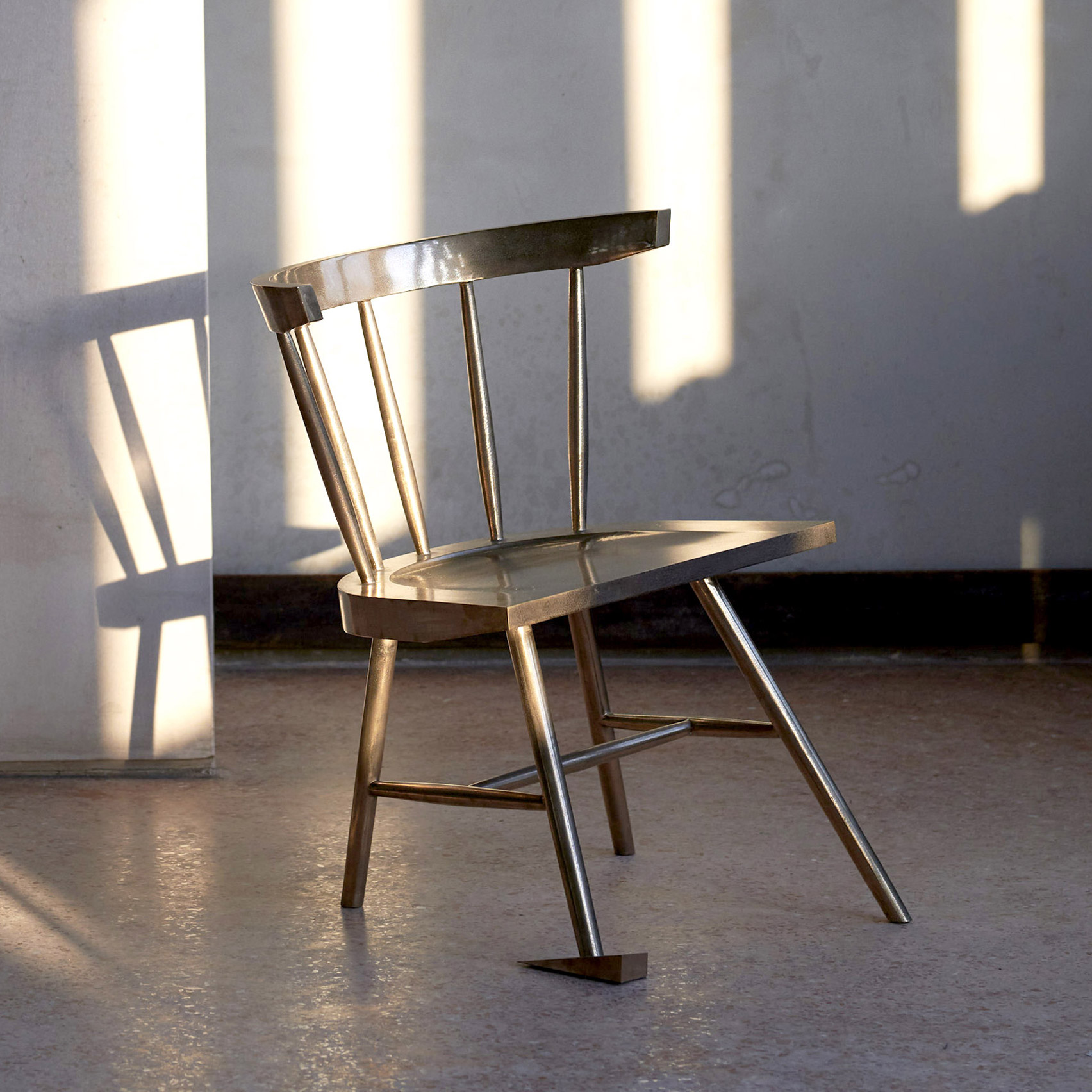
Fashion designer Virgil Abloh created a series of furniture items that are dissected at different points to appear as if they are sinking into the floor, as part of an exhibition titled Dysfunctional.
The slanted Alaska furniture collection blurs the line between art and design, being not entirely functional but instead aiming to encourage people to think about the issue of rising sea-levels.
Read more about the Alaska furniture collection ›

Vegan Design by Erez Nevi Pana
Israeli designer Erez Nevi Pana created a series of stools that are coated with a "skin" of salt crystals as a result of being submerged in water from the Dead Sea for several months.
In a bid to create animal-free furniture, Nevi Pana used the salt crystals in place of glue to secure each of the furniture's elements together. Rather than being made to sit on, the purpose of the furniture is to lead a discussion about the use of materials derived from animals in products.
"It is not aesthetic or about function," explained Nevi Pana, "it is a placid theory that can turn explosive."
Read more about the Vegan Design exhibition ›
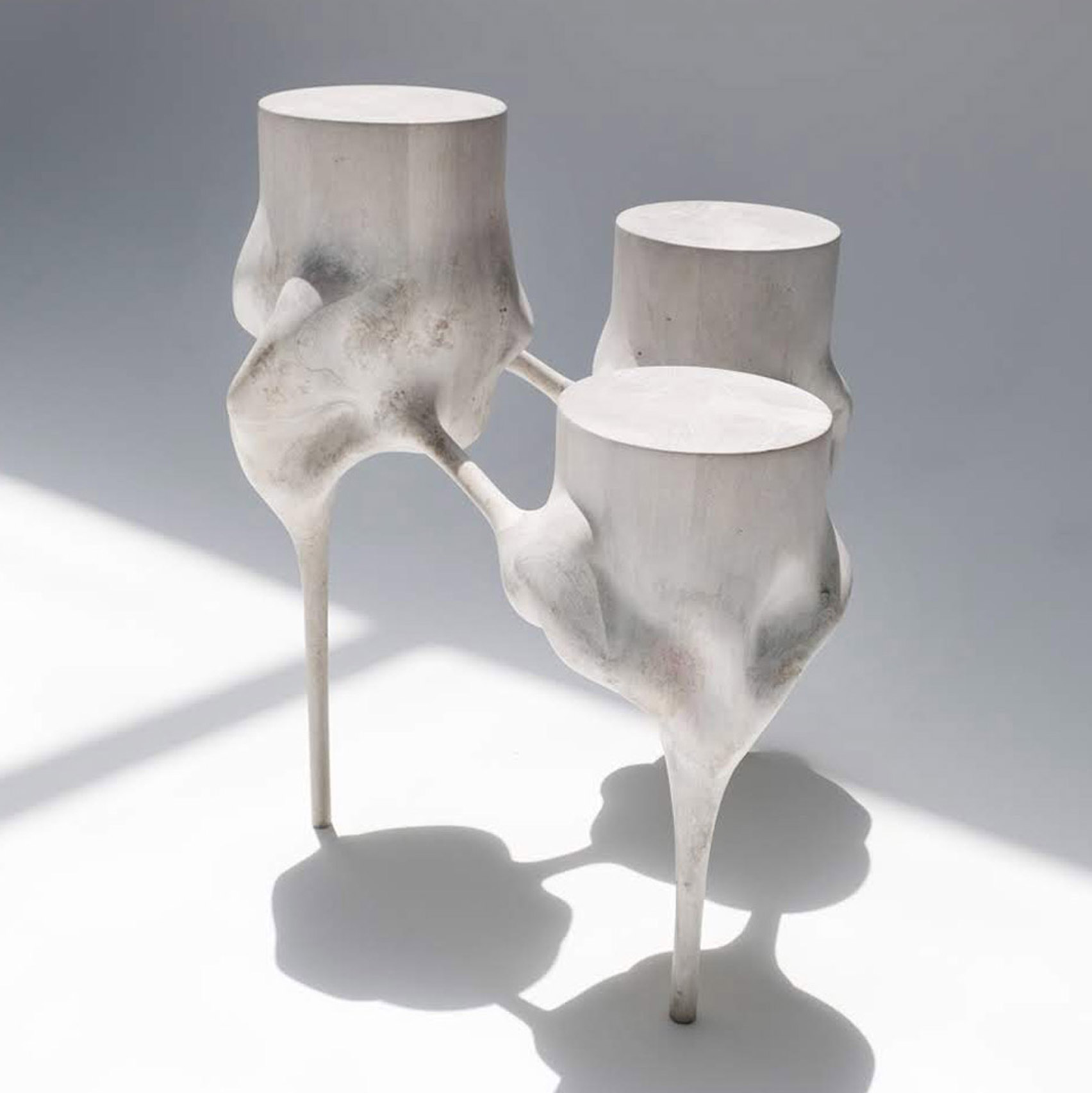
On The Meridian by Vincent Pocsik
American designer Vincent Pocsik created a series of objects that, while having the potential to act as pieces of furniture, are intended as artworks.
Made from wood and bronze, the On The Meridian collection sees Pocsik push the organic materials so far that they no longer seem natural. The pieces were designed as part of an ongoing exploration into the relationship between traditional furniture design and avant-garde art.
Read more about the On The Meridian series ›
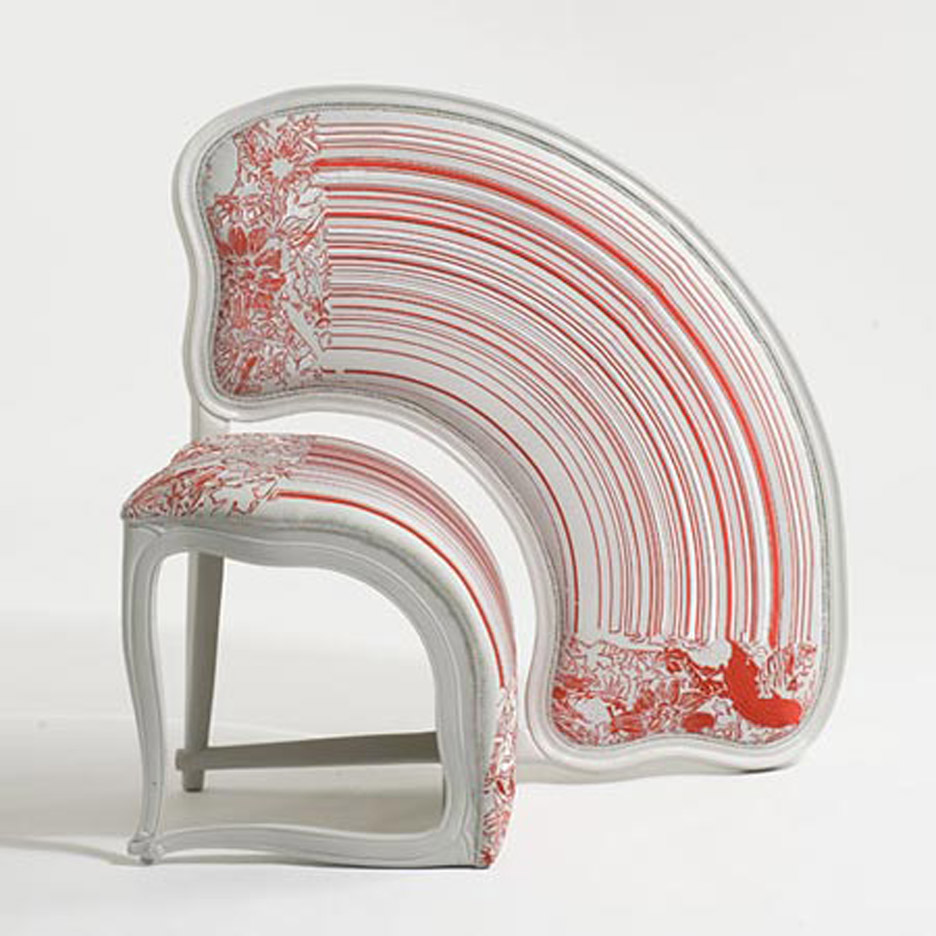
Seventeenth-century chairs and benches appear to have been stretched like taffy in this collection of "functional artworks" by Sebastian Brajkovic.
Initially wanting to create more space on a singular chair by "extruding" the seat's surface area, Brajkovic's designs soon became objects that waver between art and furniture.
The designer took the idea of lengthening the seats from the Photoshop function that allows users to select a row of pixels and extend them to any length they desire.
Read more about the Lathe series ›
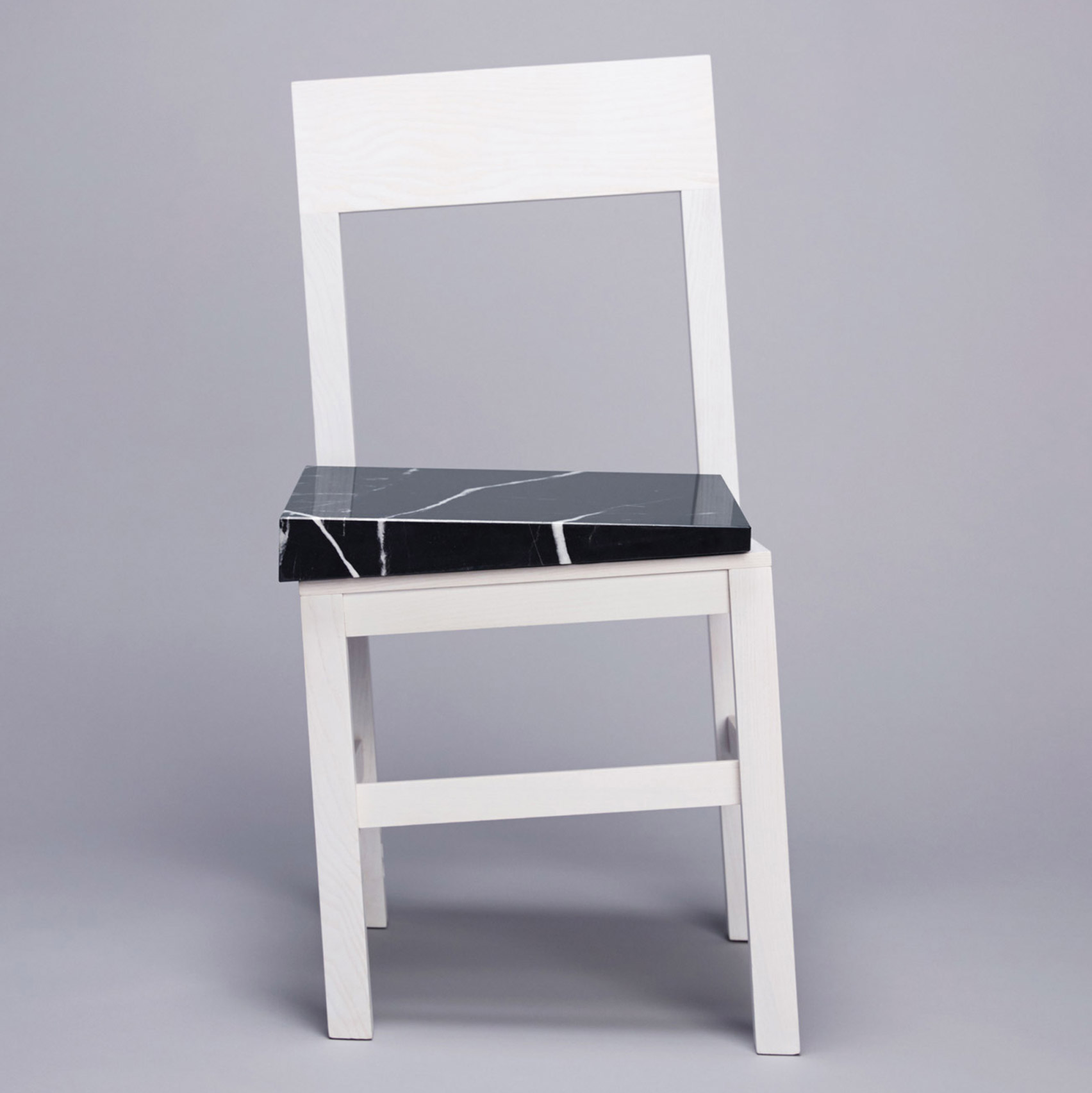
While the seat of this chair is, in fact, perfectly level, it is designed to appear wonky and therefore unusable.
New York studio Snarkitecture gave the Slip chair an off-centre frame made from white ash wood and topped this with a marble seat that has been sliced at an angle, which counteracts its leaning structure to offer an even surface.
Read more about the Lathe series ›
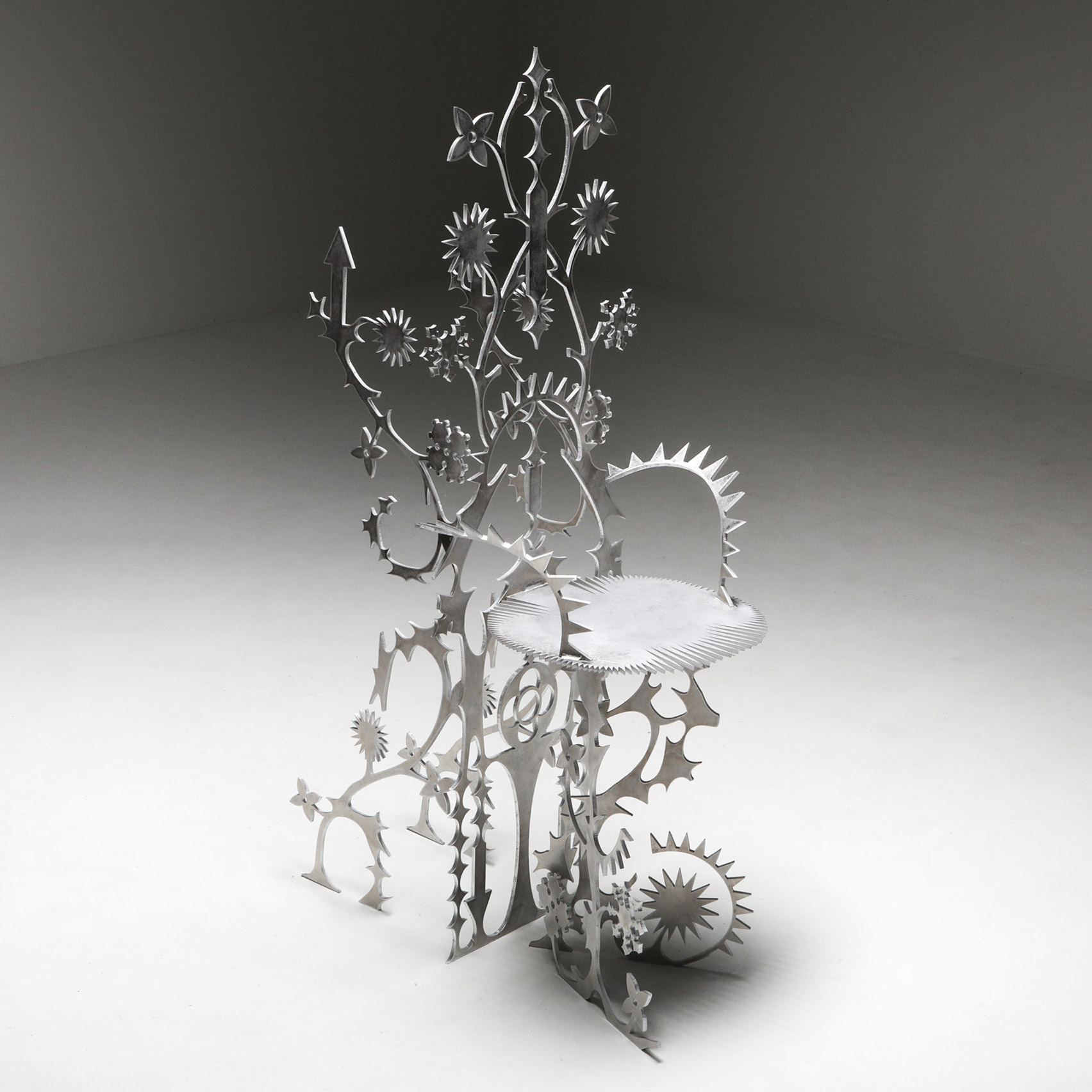
Ornamentum by Orson Oxo Van Beek and Quinten Mestdagh
Designers Orson Oxo Van Beek and Quinten Mestdagh created a collection of furniture items made from pieces of aluminium with sharp and pointy edges, making them appear dangerous to touch or use.
The series aims to blur the boundary between aesthetic and function through its excessive decoration.
"We wanted to make the pieces so overly decorated, to a point where the actual furniture becomes functionless; an ornament in itself," Van Beek told Dezeen. "The danger adds to the aesthetic and, most importantly, to the non-function of the object."
Read more about the Lathe series ›
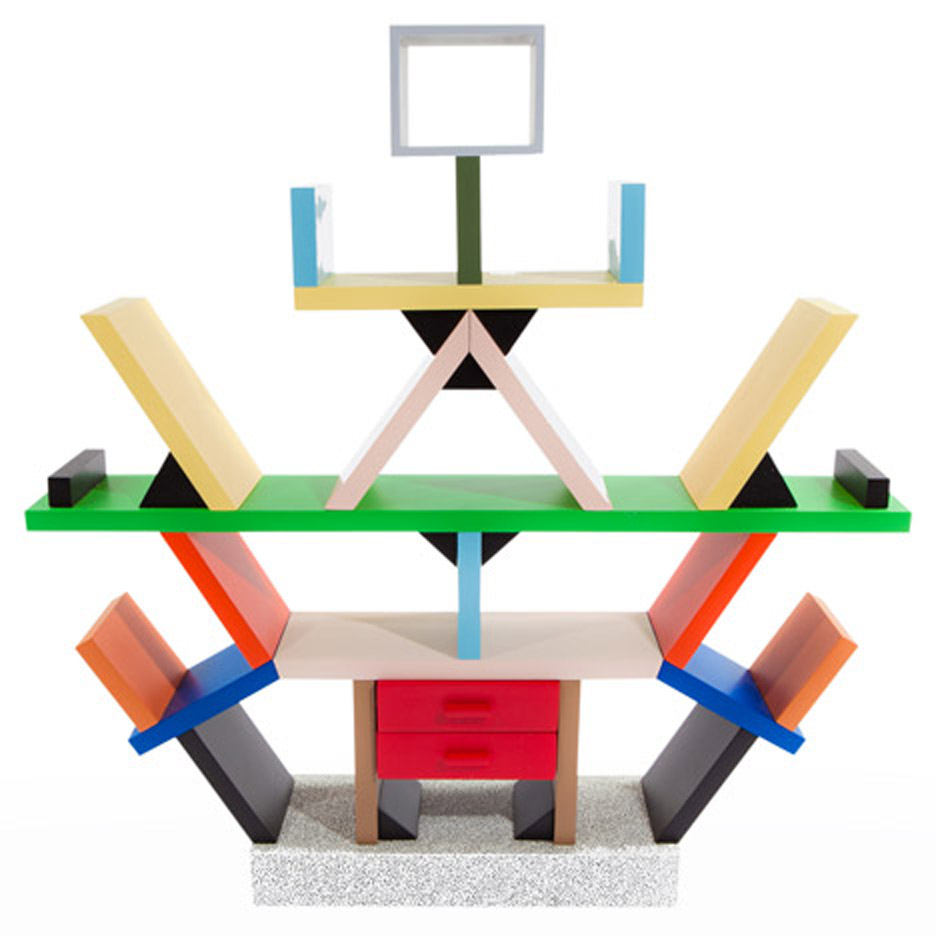
Carlton bookcase by Ettore Sottsass
The Carlton bookcase designed by Italian architect Ettore Sottsass in 1981 for his Memphis Group is labelled as his most identifiable furniture design.
Its ambiguous form, constructed of colourful, haphazard sections of laminated medium density fibreboard (MDF), could be interpreted as a bookcase, a room divider, a dresser, or just a purely ornamental object.
The design follows Sottsass' desire to break free from the restrictions of functionalism.
Read more about the Carlton bookcase ›
The post Eleven alluring furniture designs that verge on being dysfunctional appeared first on Dezeen.
from Dezeen https://ift.tt/3kQGJ1W
No comments:
Post a Comment